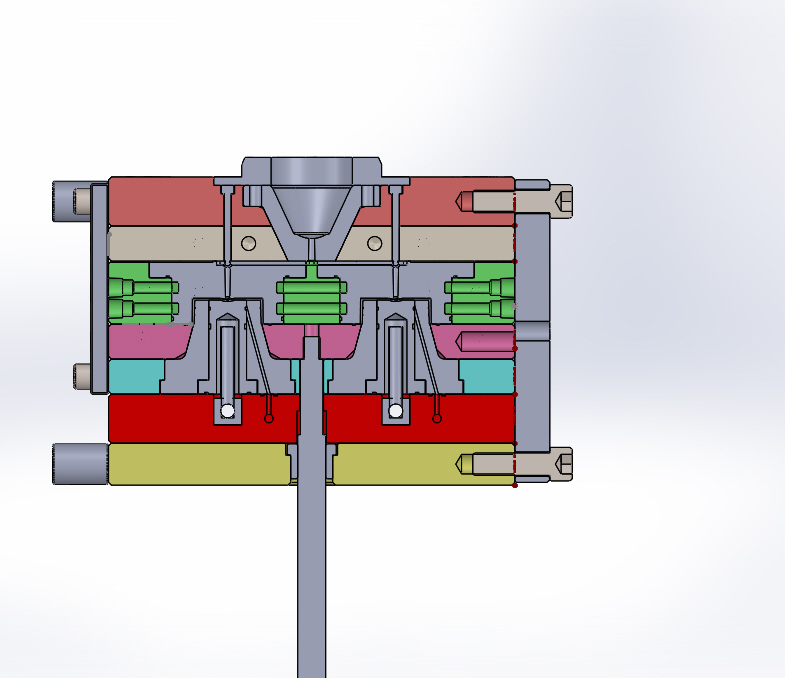- Home
- Lean Principles
- Machine Selection
- Mold Design
- Mold Interlocking
- Mold Making
- Plastic Material Technology
- Molding Process
- Plastic News
- What's New
- Privacy Policy
- Disclaimer
- Site Map
- Poll
- Polishing
- 3D Rapid Prototyping
- Molding Companies
- Contact Us
- Proven Thinwall Packaging Mold Designs For Sale
- MOLD WEIGHT CALCULATOR
- HOT RUNNER VERSUS COLD RUNNER
Used Plastic Injection Molds - What To Do Before Buying
When buying used plastic injection molds there are a number of issues to be aware of in order to minimize production problems associated with using second hand molds.
Potential production problems with used molds include poor part quality, slow cycle times, molding below full cavitation, and constant machine stoppages due to poor part ejection.
Molding Machine Damage
Another critical issue to be aware of is molding machine damage. Used plastic molds are likely to be in poor condition (that is, not flat and square) and this can cause platen wear, broken tie bars and broken toggle pins.
Machine damage will initially show up as part quality problems and mould balancing issues.
Your 9 Step Guide To Buying Quality Used Molds
To get the most out of used plastic injection molds these are the questions you need to ask before buying:
1. Ask to see the mold producing samples in person or by video link. This is the only way to get an accurate idea of cycle time and current part quality issues.
Better yet, get the mold shipped to your factory and test it yourself. After all, you get to test drive a car before you buy it.
2. Ask for the latest samples from all cavities. Weigh each sample and measure all wall thicknesses. This information will give an accurate picture into the condition of the mold. Any large variation in cavity weights or wall thicknesses will cause immediate production problems so allow for this in your planning.
3. If mold has a cold runner, ask for a runner sample – this is needed to accurately measure shot size. Also measure runner thickness and compare it to the part wall thickness. A runner that is too thin will make it difficult to mold quality parts.
4. Ask for photos of both moving and fixed sides of all used injection molds that you are interested in buying – photos will give more information about the current mold condition such as any unusual wear patterns which could lead to premature part quality issues. Photos also give an idea of mold design. Mold design influences mold maintenance requirements.
5. Ask for mold material specifications. The type of steels, aluminiums or copper alloys used in mold construction heavily influences mold life and the ability to repair and modify a mold. For example: in order to perform a welding operation on a mold, the welding material must be the same as the mold material or there is a high risk of permanently damaging the mold beyond repair.
If you can't get the material specifications then there is another option. For a small cost, some labs can analyze a sample of the material.
6. Ask for mold age. Mold age will give some idea of the degree of possible future problems. An old mold will probably give more problems than a newer mold.
7. Ask for part drawings and mold design drawings. This makes it easy to modify or repair the mold. This is an important point because without drawings your mold maker will have to spend time making his own drawings and this can get expensive.
8. Ask who made the mold. If it was made from an injection mold manufacturer with a good reputation then this will give some confidence into the reliability and quality of the mold.
9. Other questions to ask : part plastic material and mold size to ensure that it is compatible with your injection molding machinery.
Additional Comments
It might be difficult to get answers to all of the questions above but this is one of the disadvantages when buying used plastic injection moulds. The more questions that can be answered the fewer production problems you will have.
Before deciding to buy used plastic injection molds instead of new molds, keep this fact in mind:
Cheap molds make expensive parts and expensive molds make cheap parts.
Return from Used Plastic Injection Molds to Plastic Injection Mould Making





